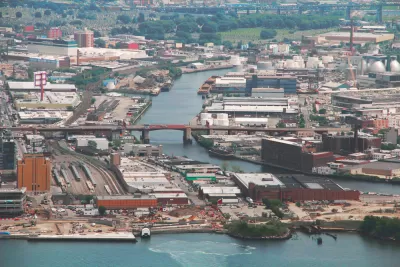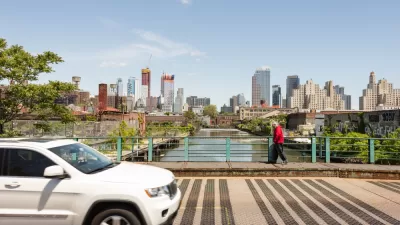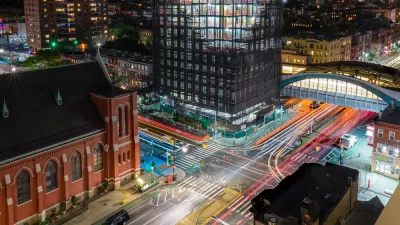A stinging critique of the public review process in New York City.

A recent critique of New York City's planning and development approvals processes, written by Justin Davidson, centers on Gowanus, Brooklyn, where a massive cleanup effort is now underway on the Gowanus Canal, along with a neighborhood rezoning study.
Both efforts have the potential to remake the neighborhood for a more equitable and salubrious quality of life for residents, according to Davidson, but the rezoning plan has fierce opponents, the cleanup will be subject to the fickle nature of federal bureaucracy, and the city's budget is "splintering" under the pressures of the pandemic.
"Those caveats shouldn’t be allowed to kill a good proposal or dampen its ambitions but rather prod the city to perfect it, and especially to demand the best design that New York’s architectural talent pool can offer," writes Davidson before expressing doubts about that potential outcome. "The rezoning may well get approved before de Blasio exits office just over a year from now, but to do so it will have to survive a planning system that has become unwieldy, unfair, and oriented toward mediocrity."
Gowanus is far from the only neighborhood cited in this article to describe the opposition forces to planning and development processes in New York City, as a defining characteristic of the newly progressive political climate, headlined by Rep. Alexandria Ocasio-Cortex, also includes fierce opposition to large-scale planning and development. "[C]aution has escalated to blanket hostility," writes Davidson.
"That urge to drive away private developers, and replace their clout and capital with public funds, is profoundly self-destructive, especially as the city’s budget withers before our eyes. Reflexive rejection is tragic because low-income areasneedrobust and thoughtful development," writes Davidson.
Key to the reality of the city's development opposition, Davidson argues, is the city's public review process: "The public-review process has a ritual, theatrical quality: months of persuasion, rejection, and mutual accusations of bad faith, frequently followed by a lawsuit. One side tries to eke out as many square feet out as possible, the other tries to knock the number down, or else extract concessions: a public plaza with benches, say, or some leftover space for a community center."
FULL STORY: New York’s Approval System for New Building Is a Recipe for Mediocrity

Alabama: Trump Terminates Settlements for Black Communities Harmed By Raw Sewage
Trump deemed the landmark civil rights agreement “illegal DEI and environmental justice policy.”

Planetizen Federal Action Tracker
A weekly monitor of how Trump’s orders and actions are impacting planners and planning in America.

The 120 Year Old Tiny Home Villages That Sheltered San Francisco’s Earthquake Refugees
More than a century ago, San Francisco mobilized to house thousands of residents displaced by the 1906 earthquake. Could their strategy offer a model for the present?

In Both Crashes and Crime, Public Transportation is Far Safer than Driving
Contrary to popular assumptions, public transportation has far lower crash and crime rates than automobile travel. For safer communities, improve and encourage transit travel.

Report: Zoning Reforms Should Complement Nashville’s Ambitious Transit Plan
Without reform, restrictive zoning codes will limit the impact of the city’s planned transit expansion and could exclude some of the residents who depend on transit the most.

Judge Orders Release of Frozen IRA, IIJA Funding
The decision is a victory for environmental groups who charged that freezing funds for critical infrastructure and disaster response programs caused “real and irreparable harm” to communities.
Urban Design for Planners 1: Software Tools
This six-course series explores essential urban design concepts using open source software and equips planners with the tools they need to participate fully in the urban design process.
Planning for Universal Design
Learn the tools for implementing Universal Design in planning regulations.
Clanton & Associates, Inc.
Jessamine County Fiscal Court
Institute for Housing and Urban Development Studies (IHS)
City of Grandview
Harvard GSD Executive Education
Toledo-Lucas County Plan Commissions
Salt Lake City
NYU Wagner Graduate School of Public Service




























